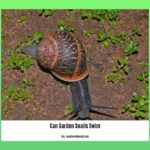So, you’re dreaming of a vibrant garden, but those pesky deer keep munching on your flowers? If you’re wondering if marigolds are the key to keeping your blooms safe, you’re in the right place. Let’s explore the relationship between deer and marigolds, and discover how to create a deer-resistant haven.
Understanding Deer and Marigolds: A Fragrant Defense
Do deer eat marigolds? The short answer is: they might, but they usually don’t. Marigolds possess a secret weapon—their potent, musky aroma, which most deer find off-putting. Think of it as nature’s “keep out” sign. This scent, combined with their slightly rough texture, often makes marigolds unappetizing to deer. However, a ravenous deer, especially in late fall when food is scarce, might nibble on them if nothing tastier is available.
Choosing the Right Marigolds: Maximizing Deer Resistance
Not all marigolds offer the same level of protection. Some varieties boast a stronger scent than others, making them more effective deer deterrents. If you’re aiming for maximum deer resistance, consider these pungent options:
- French Marigolds (Tagetes patula): These vibrant blooms offer a robust, spicy fragrance that deer tend to avoid. They come in a wide array of colors, adding beauty and protection to your garden.
- Signet Marigolds (Tagetes tenuifolia): These smaller marigolds have a lighter, citrusy scent that can still deter deer. While not as potent as French marigolds, they contribute to a deer-resistant environment.
- Mexican Marigolds (Tagetes lucida): Known for their anise-like scent, these marigolds make excellent border plants, creating a fragrant barrier.
Beyond Marigolds: Building a Deer-Proof Fortress
While marigolds can be helpful, relying on them alone might not be enough, especially if deer pressure is high in your area. A multi-layered defense is the most effective strategy:
- Companion Planting: Surround your marigolds and other vulnerable plants with strongly scented companions like lavender, rosemary, and chives.
- Deer Repellents: Commercial or homemade repellents (like a mint spray) offer an added layer of protection. Reapply frequently, especially after rain. Some experts suggest rotating repellent types to prevent deer from becoming accustomed to one scent.
- Scare Tactics: Motion-activated sprinklers, reflective tape, wind chimes, or even radios can create an environment deer find unsettling.
- Physical Barriers: Fencing is the most reliable solution, though it can be an investment. Consider netting or smaller fences around vulnerable areas.
Strategic Placement: Optimizing Marigold Effectiveness
Location matters. Planting pungent marigold varieties along your garden’s perimeter creates a natural deterrent. Interspersing them within your garden beds offers added protection for other vulnerable plants.
Understanding the Deer Mind: Adaptability and Observation
Deer are adaptable. What works one year might not work the next. Observe their behavior. Are your marigolds untouched, or are there signs of nibbling? Adjust your strategy as needed. Try different varieties, add deterrents, or reinforce your existing defenses.
Marigold Varieties and Deer Resistance: At a Glance
| Marigold Variety | Scent Strength | Texture | Deer Resistance |
|---|---|---|---|
| French Marigolds | High | Medium | High |
| Signet Marigolds | Medium | Fine | Medium |
| Mexican Marigolds | High | Medium | High |
A Gardener’s Arsenal: Exploring the Best Deer Deterrents
Marigolds play a valuable role in deer deterrence due to their strong scent and texture, but they’re most effective as part of a comprehensive strategy.
Let’s explore the range of deterrents available:
| Deterrent Type | Description | Pros | Cons |
|---|---|---|---|
| Fencing | A tall fence (at least 8 feet high) surrounding your garden. | Extremely effective, long-lasting solution, provides a physical barrier. | Can be expensive, may not be aesthetically pleasing, requires installation. |
| Chemical Repellents | Sprays applied to plants or the surrounding area, containing substances deer find unpleasant. | Relatively easy to apply, can target specific plants, offers a quick solution. | Needs frequent reapplication, some have strong odors, can be harmful to other animals. |
| Scare Tactics | Noisemakers, motion-activated sprinklers, flashing lights. | Can be initially effective, relatively inexpensive, can cover a wide area. | Deer can become habituated, effectiveness varies. |
| Plant-Based Deterrents | Marigolds, other strongly scented or textured plants like lavender, rosemary, or lamb’s ear. | Natural, aesthetically pleasing, can enhance your garden’s beauty. | Less effective individually, requires planning and planting, may not deter all deer. |
Do Deer Eat Geraniums? Unveiling Another Garden Favorite
Geraniums, like marigolds, possess a strong scent thanks to aromatic oils and tannins. This often deters deer, but remember, “deer-resistant” doesn’t mean “deer-proof.” A hungry deer might still nibble.
Some geraniums offer better protection than others. Hardy geraniums (G. macrorrhizum) are particularly tough and less appealing to deer. Boost your geranium defenses with these strategies:
- Physical Barriers: An eight-foot fence can effectively deter deer.
- Deer Repellents: Commercial or homemade repellents (like an egg and water mixture) provide added protection.
- Companion Planting: Strongly scented companions like marigolds create a confusing smell-scape that deer tend to avoid.
| Geranium Variety | Deer Resistance | Notes |
|---|---|---|
| Hardy Geranium (G. macrorrhizum) | High | These tough plants rarely experience significant damage from deer. |
| Scented Geraniums | Moderate | The strong scent often deters deer, but it’s not always foolproof. |
| Zonal Geraniums | Moderate to Low | These are more susceptible to browsing, especially young plants. |
| Ivy Geraniums | Moderate to Low | Their soft leaves can be quite tempting to hungry deer. |
Nature’s Shield: Unveiling Deer-Resistant Flowers
While no plant is entirely deer-proof, many possess qualities that make them less appealing to these four-legged foragers. Strong scents, prickly textures, and even toxic compounds can deter deer.
Annuals:
- Cosmos: Their wispy foliage often gets overlooked by deer.
- Nasturtiums: Their peppery bite is typically unappealing to deer.
- Marigolds: Their pungent aroma acts as a natural deterrent.
- African marigolds (Tagetes erecta)
- Ageratum (Ageratum houstonianum)
- Canna lilies (Canna x generalis)
Perennials:
- Bleeding hearts
- Coneflowers
- Corydalis
- Coreopsis
- Verbena
- Lavender: This fragrant favorite is a deer deterrent.
- Daffodils: These are generally left alone due to their toxic properties.
- Virginia bluebells
Beyond Individual Plants:
- Strategic placement: Grouping deer-resistant plants at your garden’s edge, where deer typically enter, can be more effective.
- Regional know-how: Deer preferences vary by region. Consult your local nursery for area-specific advice.
- Companion planting: A diverse garden can confuse deer. Interplanting vulnerable plants with deer-resistant varieties offers natural protection.
- Other deer deterrents: Incorporate deer-resistant shrubs, trees, and thorny bushes for added defense.
Creating a deer-resistant garden involves understanding deer behavior and implementing a multi-faceted approach. Experimentation is key! Your success depends on your specific garden, the deer pressure in your area, and your budget. Consider fencing, repellents, scare tactics, and a diverse mix of deer-resistant plants. For more fascinating insights into the animal kingdom, explore the captivating f1bb goldendoodle, the unique fahaka puffer (also known as the fahaka pufferfish), or the majestic Goliath biggest Shire horse.
What are your experiences with deer and marigolds? Share your tips and questions in the comments below!
- Mastering Leader in Spanish: The Complete Guide - April 19, 2025
- Uncovering Surprising Parallels: England Size Compared to US States - April 19, 2025
- Old Mexico Map: Border Shifts 1821-1857 - April 19, 2025
















